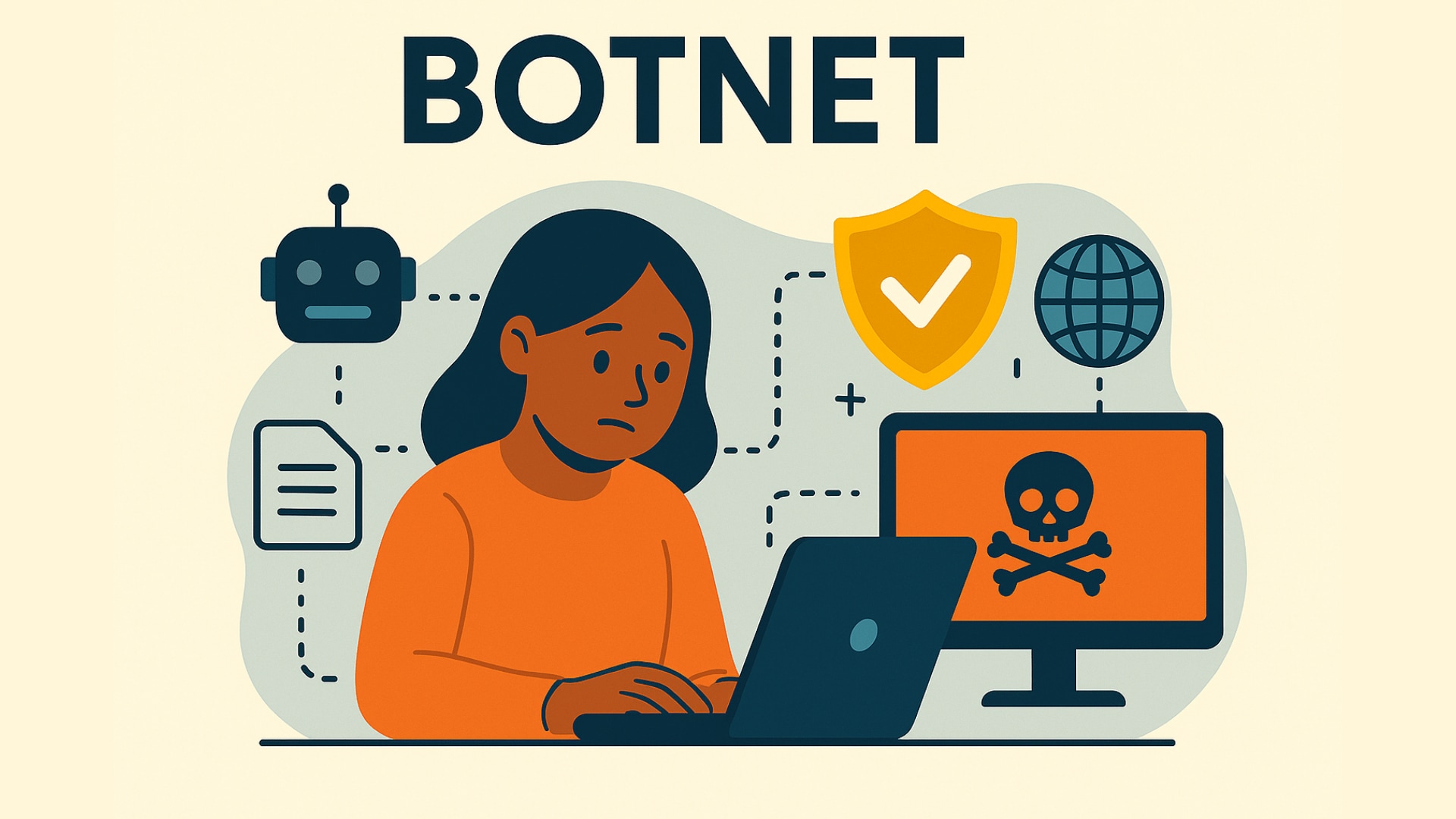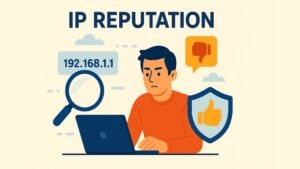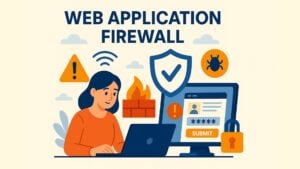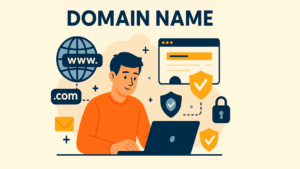
Imagine thousands — or even millions — of devices across the world working together, controlled by a single entity. These devices may seem harmless on their own, but once compromised, they become part of a massive network used to carry out malicious activities without the knowledge of their owners. This is the essence of a botnet — a silent, powerful tool in the hands of cybercriminals and one of the most dangerous threats. Understanding how botnets function and how they can affect your business is crucial for building a robust defense strategy and protecting your online assets.
Table of contents
What is a Botnet?
A botnet is a network of internet-connected devices infected with malicious software, giving an attacker remote control. These compromised devices, known as bots or zombies, carry out harmful tasks without the owner’s knowledge or consent. From launching attacks to stealing data or generating fake ad clicks, botnets can cause widespread damage.
How Are Botnets Created?
Creating a botnet is a multi-step process that begins with infecting devices with malware. Attackers typically use phishing emails, malicious websites, or software vulnerabilities to infiltrate devices. Once the device is infected, it becomes part of the botnet, connecting to a command-and-control (C&C) server controlled by the attacker.
Malware often spreads through various attack vectors. Once a device is infected, it connects to the C&C server, which then sends commands to all compromised devices. Initially, they relied on a centralized system with one server controlling everything. Today, modern botnets use a decentralized peer-to-peer (P2P) structure, allowing bots to communicate directly with each other. This makes them more resilient and harder to dismantle.
When the botmaster issues commands, the bots carry out tasks such as launching DDoS attacks, stealing data, or distributing malware. The ability to control so many devices at once gives attackers significant power to cause widespread disruption.
Structure of Botnets
Botnets can vary in structure, but most share some common traits. There are two major types of botnets:
- Centralized Botnets: In these, a central server controls all the bots. While easier to manage, they are also more vulnerable. If the C&C server is taken down, the entire botnet can be disrupted.
- Decentralized Botnets: More sophisticated botnets use a peer-to-peer (P2P) model, where bots communicate directly with each other. This structure makes them more resilient because there is no central server to target. Each infected device acts as both a bot and a server, making them harder to shut down.
Botnets can target a variety of devices, from personal computers to mobile phones and Internet of Things (IoT) devices. The flexibility makes them useful for a wide range of attacks.
Threats and Use of Botnets
Botnets serve a variety of malicious purposes, all of which can devastate individuals, businesses, and even governments. These networks enable activities ranging from financial fraud to service disruptions. Understanding how they are used helps businesses prepare and defend against these attacks more effectively.
DDoS Attacks
Distributed Denial-of-Service (DDoS) Attacks are among the most common uses of botnets. By flooding a targeted server or website with traffic from thousands or millions of infected devices, botmasters overwhelm the system’s resources, rendering it inaccessible to legitimate users. These attacks can result in significant downtime for businesses and are difficult to defend against without proper protections in place.
Spam and Phishing Campaigns
Another common botnet activity is spam and phishing campaigns. They send massive volumes of unsolicited emails, often containing links to malicious websites or infected attachments. These emails deceive recipients into providing personal information, downloading malware, or unknowingly contributing to further botnet expansion.Since spam campaigns come from a variety of devices, they are harder to track and block.
Data Theft
Botnets also serve as a tool for data theft. Once an attacker controls a network of bots, they can steal sensitive information from infected devices. This includes login credentials, credit card numbers, and personal details, which can be sold or used for financial gain. They can also be leveraged for credential stuffing and brute force attacks. These methods involve using lists of stolen usernames and passwords to automate login attempts, trying multiple combinations in a short period to break into online accounts.
Cryptojacking
Additionally, cryptojacking has become a growing use of botnets. In this type of attack, the botmaster uses the computing power of infected devices to mine cryptocurrency. The rewards from this process are then sent directly to the attacker, who profits from the hijacked processing power of thousands of unsuspecting victims.
Ad Fraud
Ad fraud is another issue linked to botnets. By generating fake clicks on online ads, they create inflated traffic reports that result in fraudulent revenue for malicious websites. Advertisers suffer financial losses and the legitimacy of online ad metrics is compromised.
State-Sponsored Botnets
While these activities are financially motivated, botnets can also be used for political or social reasons. State-sponsored botnets, for example, target critical infrastructure like power grids, financial institutions and communication networks. These attacks can have severe implications for national security, causing widespread disruption and potentially affecting public safety.
Persistent and Scalable Threats
The threat posed by botnets is amplified by the fact that they are difficult to detect and dismantle. Because these attacks are often distributed across a large number of compromised devices, even if one bot is removed, the botnet can continue its activities through the other bots in the network. This persistence and scalability makes them a particularly dangerous tool for cybercriminals and state-sponsored hackers alike.
Prevention and Mitigation
To protect your business from botnets, you need a proactive strategy that combines technical solutions with employee awareness. The first step in prevention is ensuring all devices, especially IoT devices, are kept up to date with the latest security patches. Outdated software is a common entry point for malware, so regular updates are essential to close vulnerabilities.
Another key aspect of botnet prevention is using strong, unique passwords for all accounts and devices. Weak or default passwords make it easy for attackers to take control. Implementing multi-factor authentication (MFA) adds an extra layer of security, making it much harder for attackers to gain unauthorized access.
Employee training is critical, as many botnet infections start with phishing emails or social engineering. Educating your staff on how to recognize suspicious emails, avoid clicking on untrusted links and refrain from downloading attachments from unknown sources helps prevent initial infections.
In addition to training, installing antivirus and anti-malware software on all devices is essential for detecting and removing botnet malware. Regular network scans and real-time monitoring will help identify potential infections early.
For more advanced protection, firewalls and intrusion detection systems (IDS) can monitor network traffic for unusual patterns that might indicate a botnet attack. By detecting anomalies, you can respond quickly to mitigate the threat.
Finally, securing IoT devices is essential, as they are often the most vulnerable. Change default passwords, disable unnecessary features and keep firmware updated to reduce the risk of these devices being hijacked and added to a botnet.
Conclusion
Botnets represent a serious and ever-evolving cybersecurity threat. The power of botnets lies in their ability to exploit thousands of devices, causing significant damage. Whether used for DDoS attacks, spam campaigns, data theft, or ad fraud, they can impact businesses of all sizes. The best defense against them involves a multi-layered approach, combining strong passwords, software updates, employee training, and network security tools.
captcha.eu, a privacy-compliant CAPTCHA solution, offers a valuable tool for mitigating botnet risks by filtering out malicious automated traffic. By incorporating CAPTCHA systems into your defense strategy, you can better protect your website from bot-driven attacks, such as credential stuffing, spam and DDoS.
Incorporating these protections into your security strategy helps ensure your business remains resilient against botnet attacks and other forms of cybercrime.
FAQ – Frequently Asked Questions
What is a botnet?
A botnet is a network of internet-connected devices that have been infected with malware and are controlled remotely by an attacker. These compromised devices, called “bots,” are used to carry out malicious activities without the device owner’s knowledge.
How do botnets work?
Botnets work by infecting multiple devices with malware. Once infected, the devices connect to a command-and-control (C&C) server where the botmaster sends instructions to carry out attacks, such as sending spam, launching DDoS attacks, or stealing data.
What are common uses of botnets?
Botnets are commonly used for DDoS attacks, spam campaigns, data theft, credential stuffing, cryptojacking, and ad fraud. They can also be used for state-sponsored attacks on critical infrastructure.
How can I tell if my device is part of a botnet?
Signs of a botnet infection may include slow device performance, unexpected crashes, high data usage, or unusual network activity. Running antivirus software or scanning for malware can help detect infections.
How can I protect my business from botnets?
To protect against botnets, keep all devices and software updated, use strong passwords, implement multi-factor authentication (MFA), train employees to recognize phishing attempts, and use antivirus software. Additionally, firewalls and intrusion detection systems (IDS) can help monitor for unusual activity.
Can botnets cause financial damage?
Yes, botnets can cause significant financial damage, including loss of revenue from DDoS attacks, stolen data, fraud, and ad revenue fraud. They can also damage a business’s reputation and result in costly downtime.
What is the difference between centralized and decentralized botnets?
Centralized botnets rely on a single server to control the network, while decentralized botnets use a peer-to-peer structure where bots communicate directly with each other, making them harder to dismantle.
100 free requests
You have the opportunity to test and try our product with 100 free requests.
If you have any questions
Contact us
Our support team is available to assist you.




